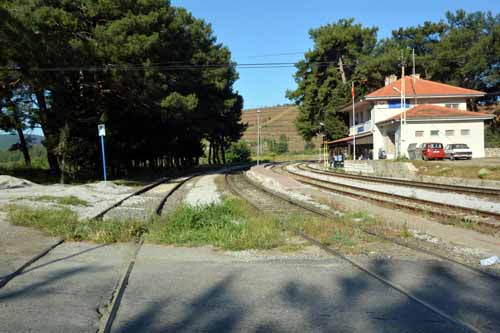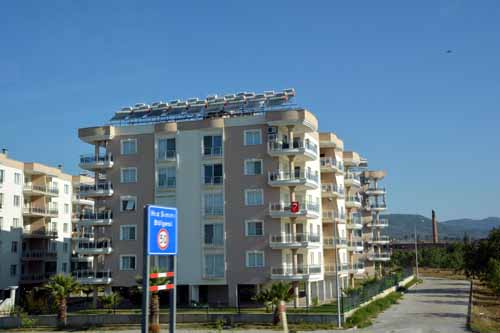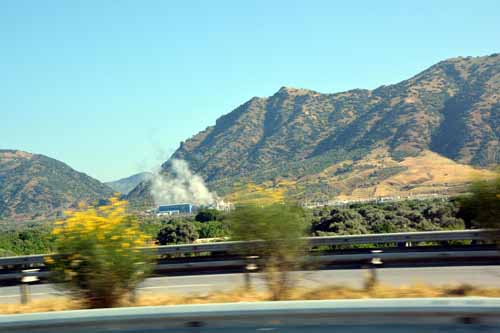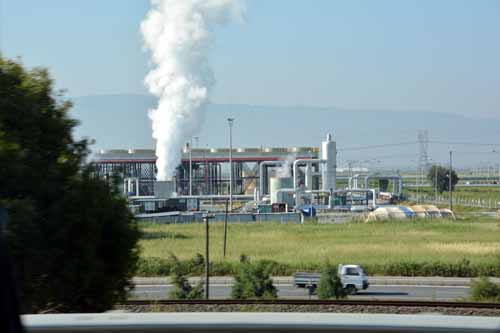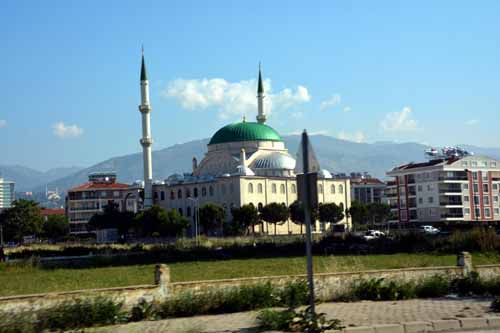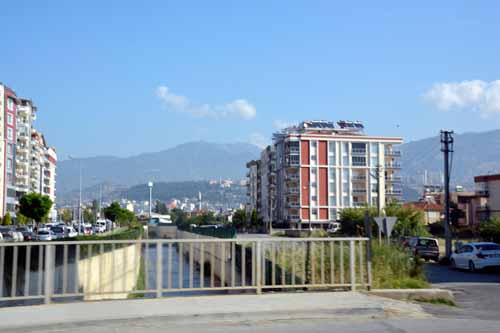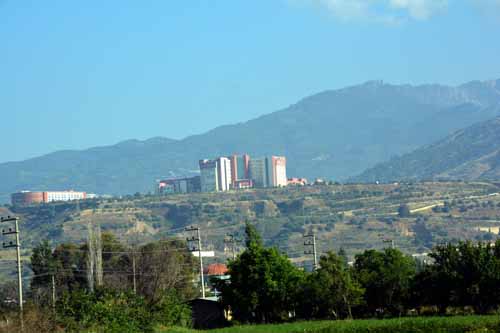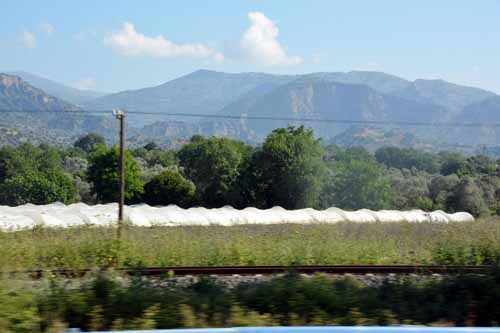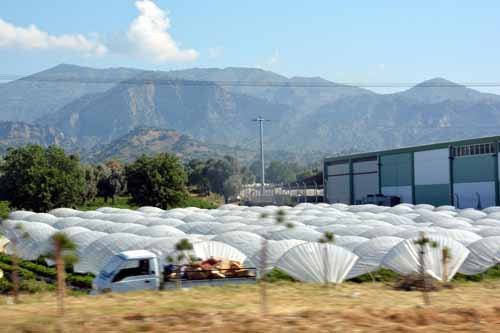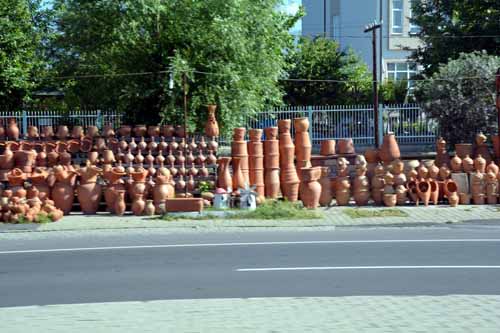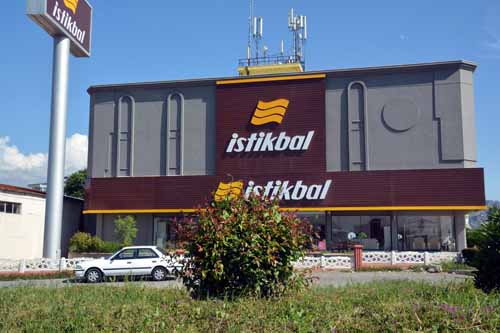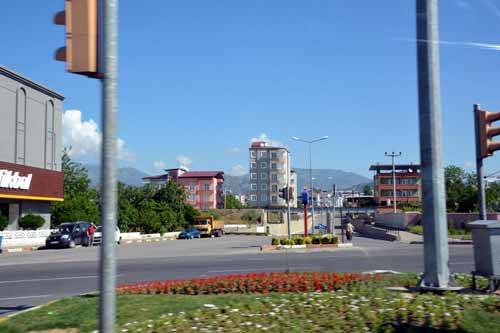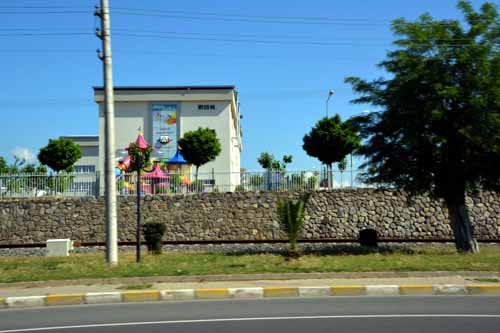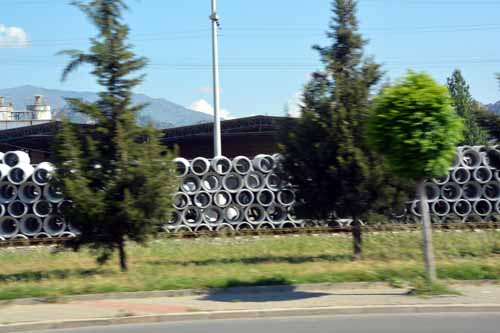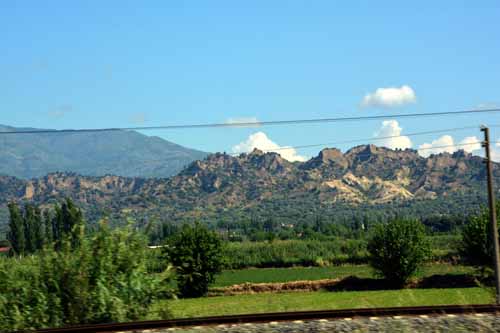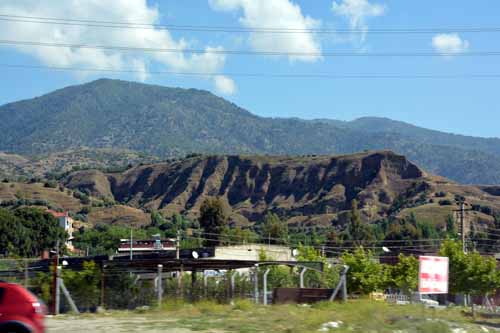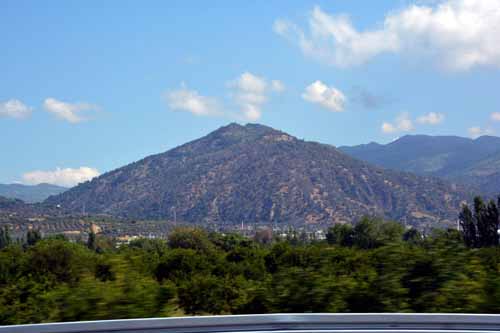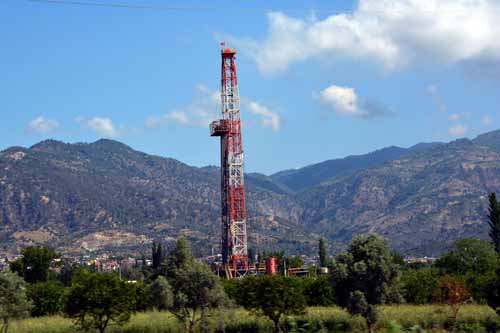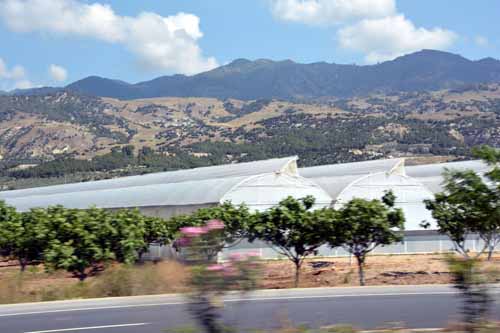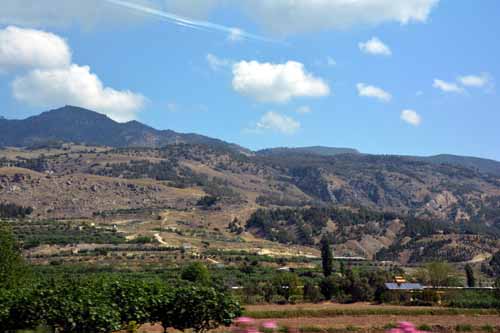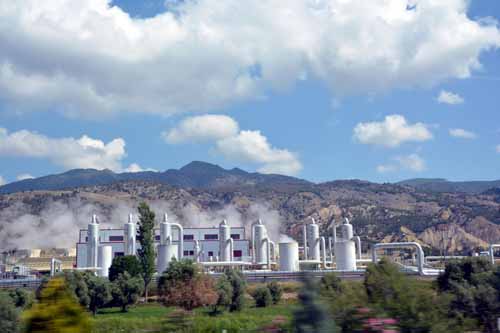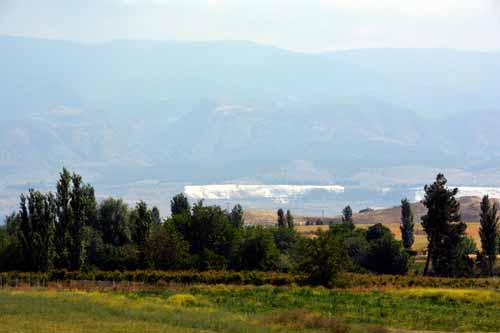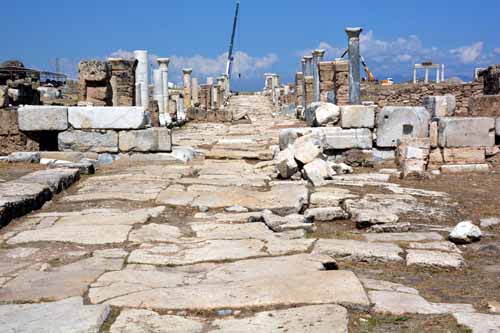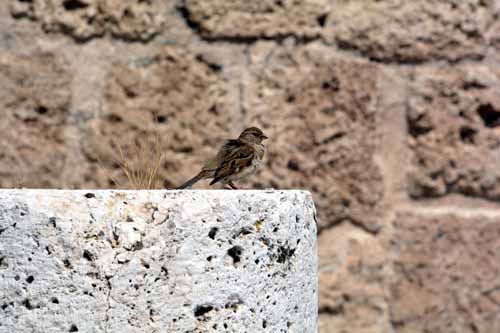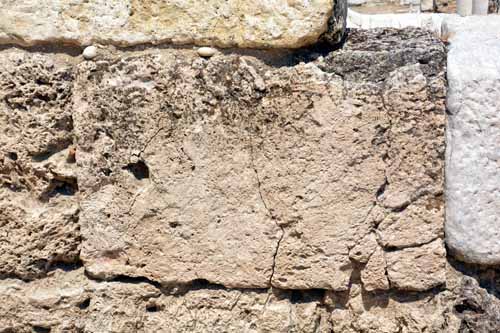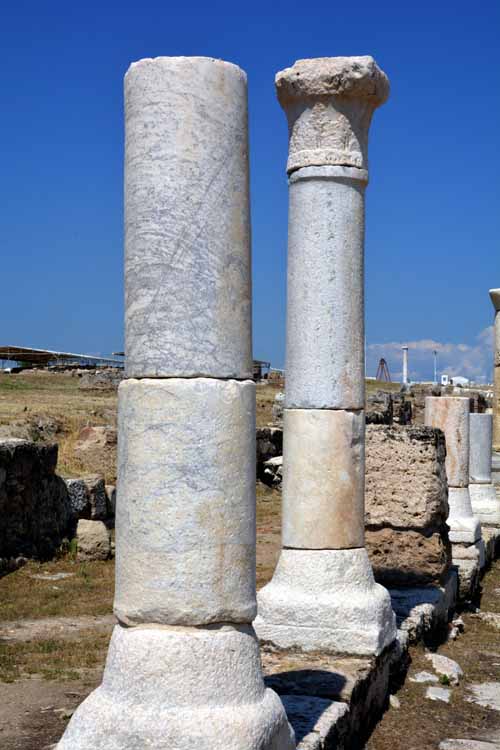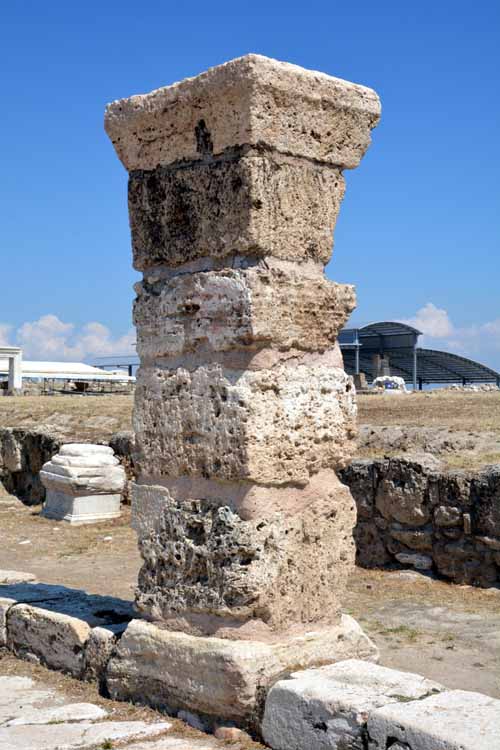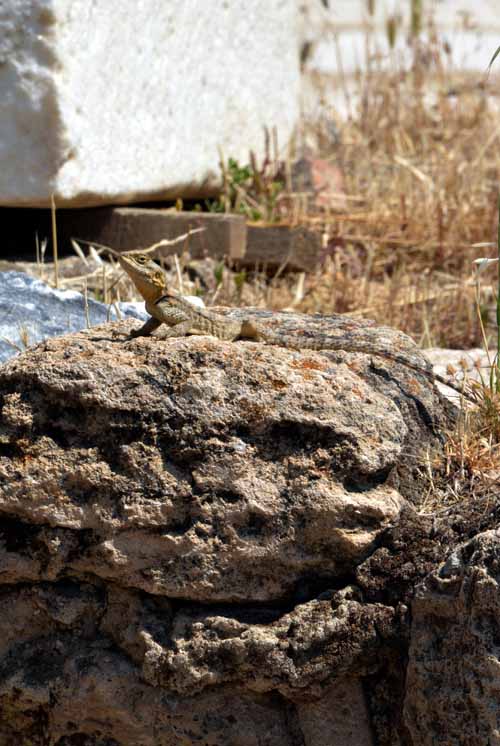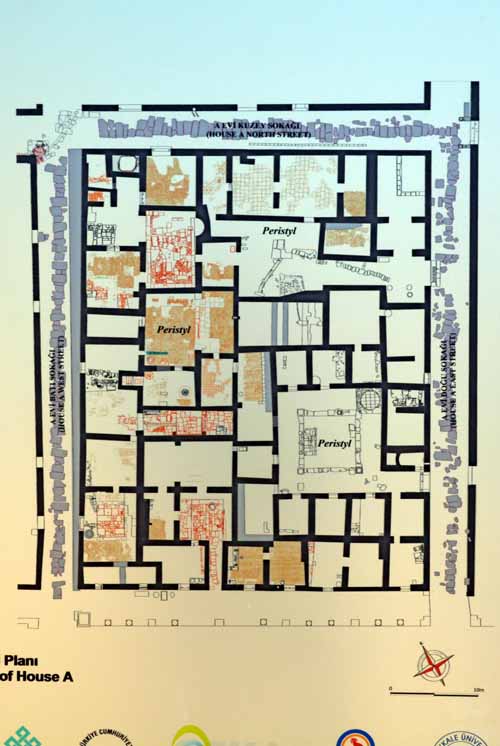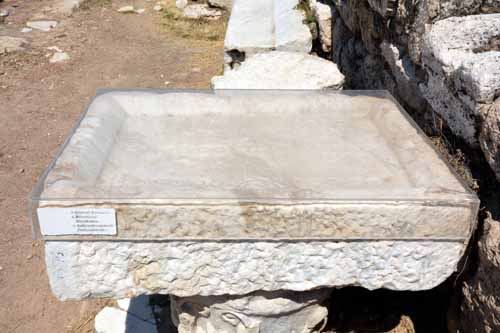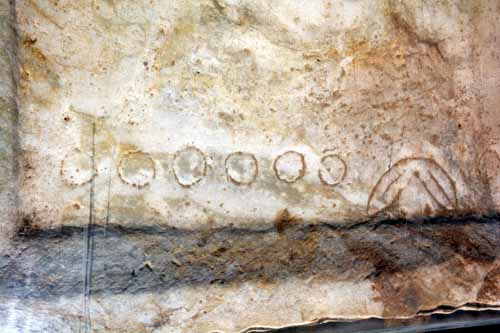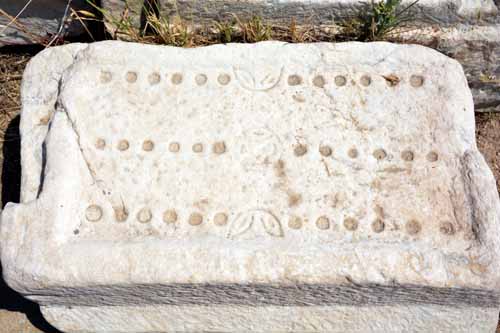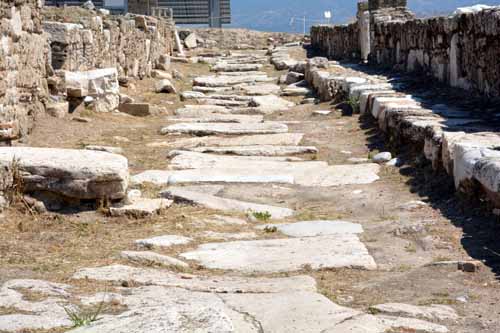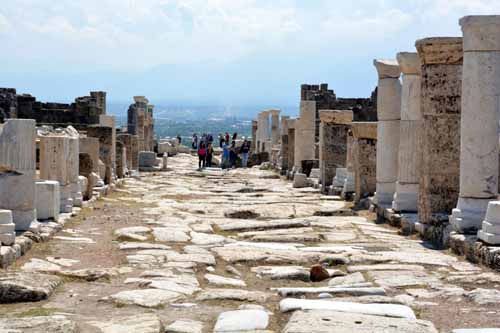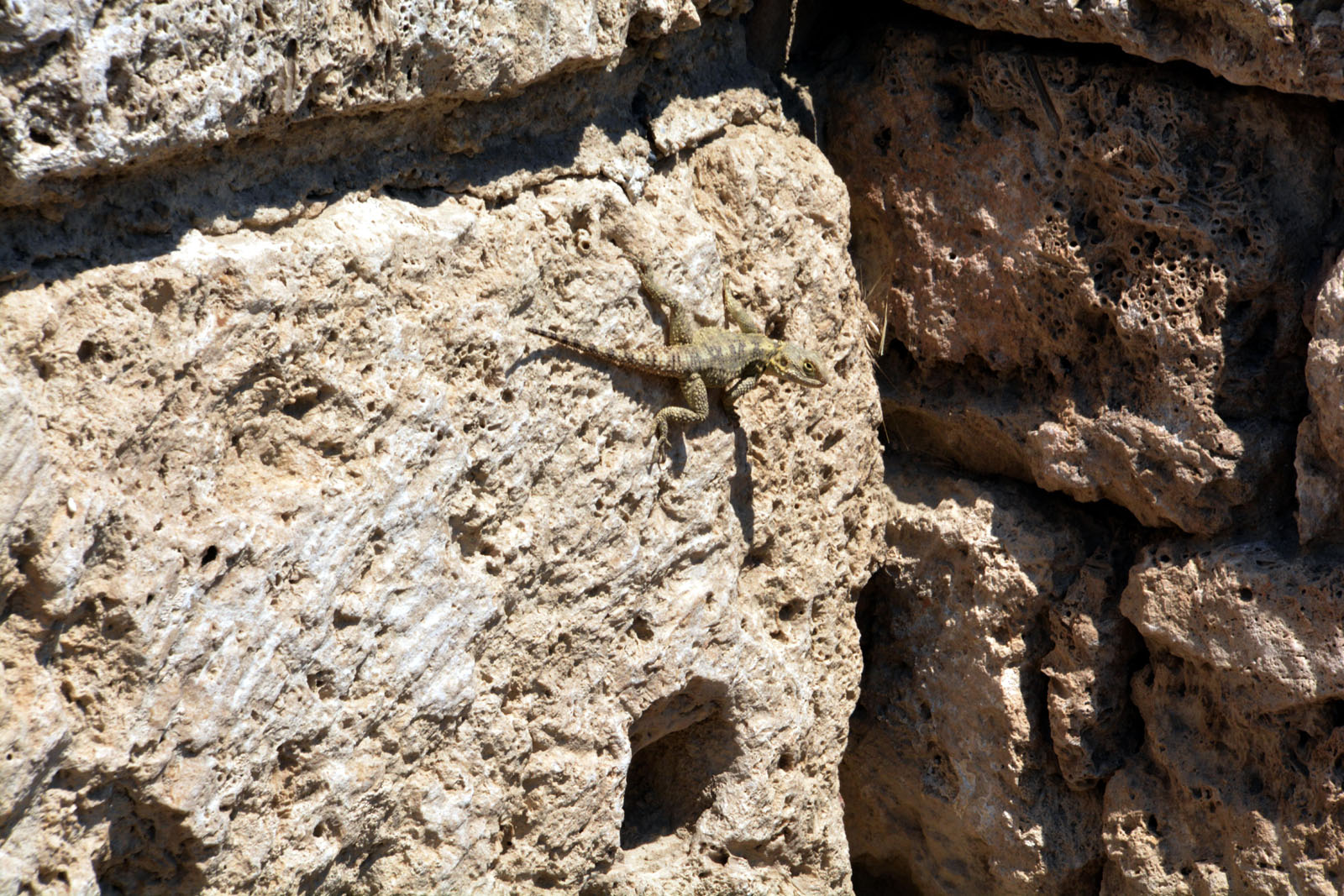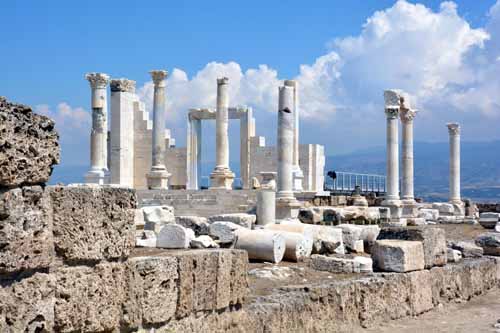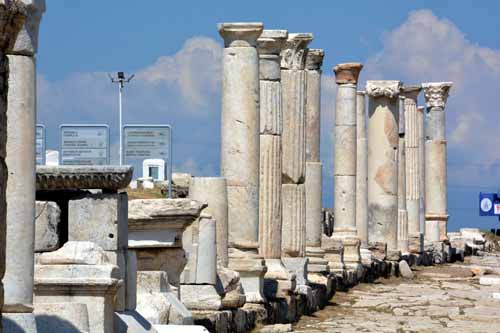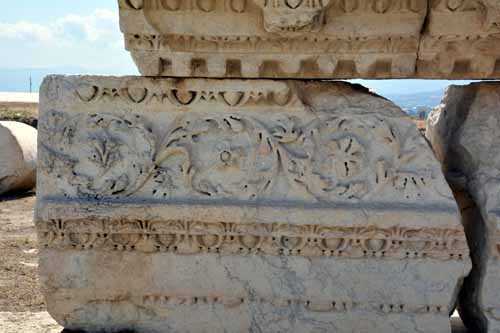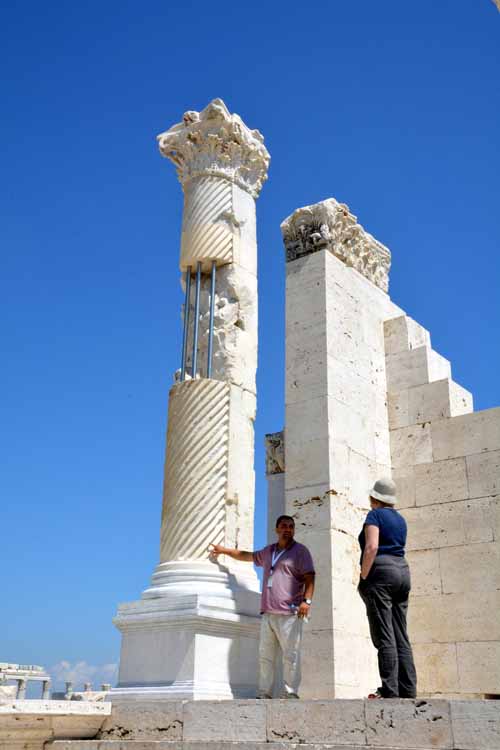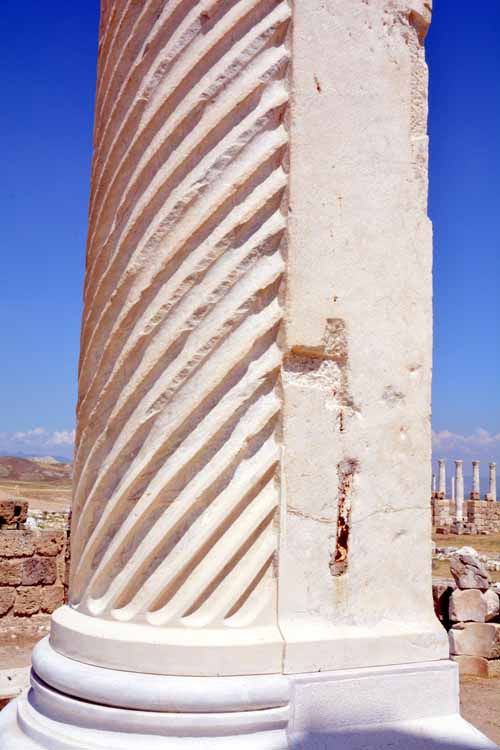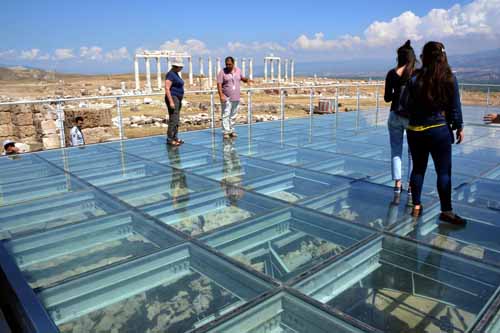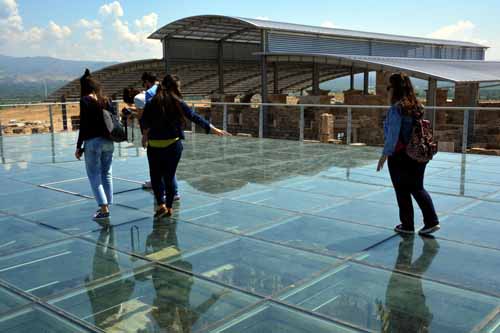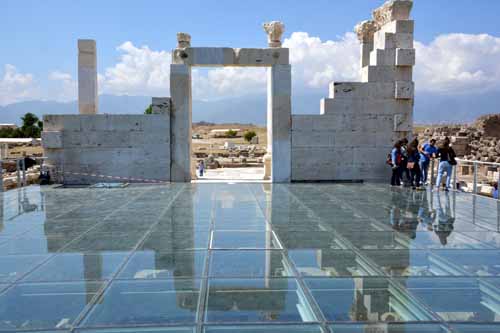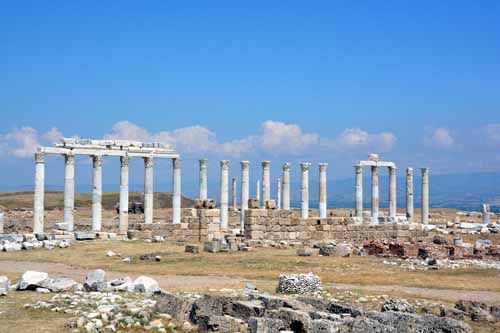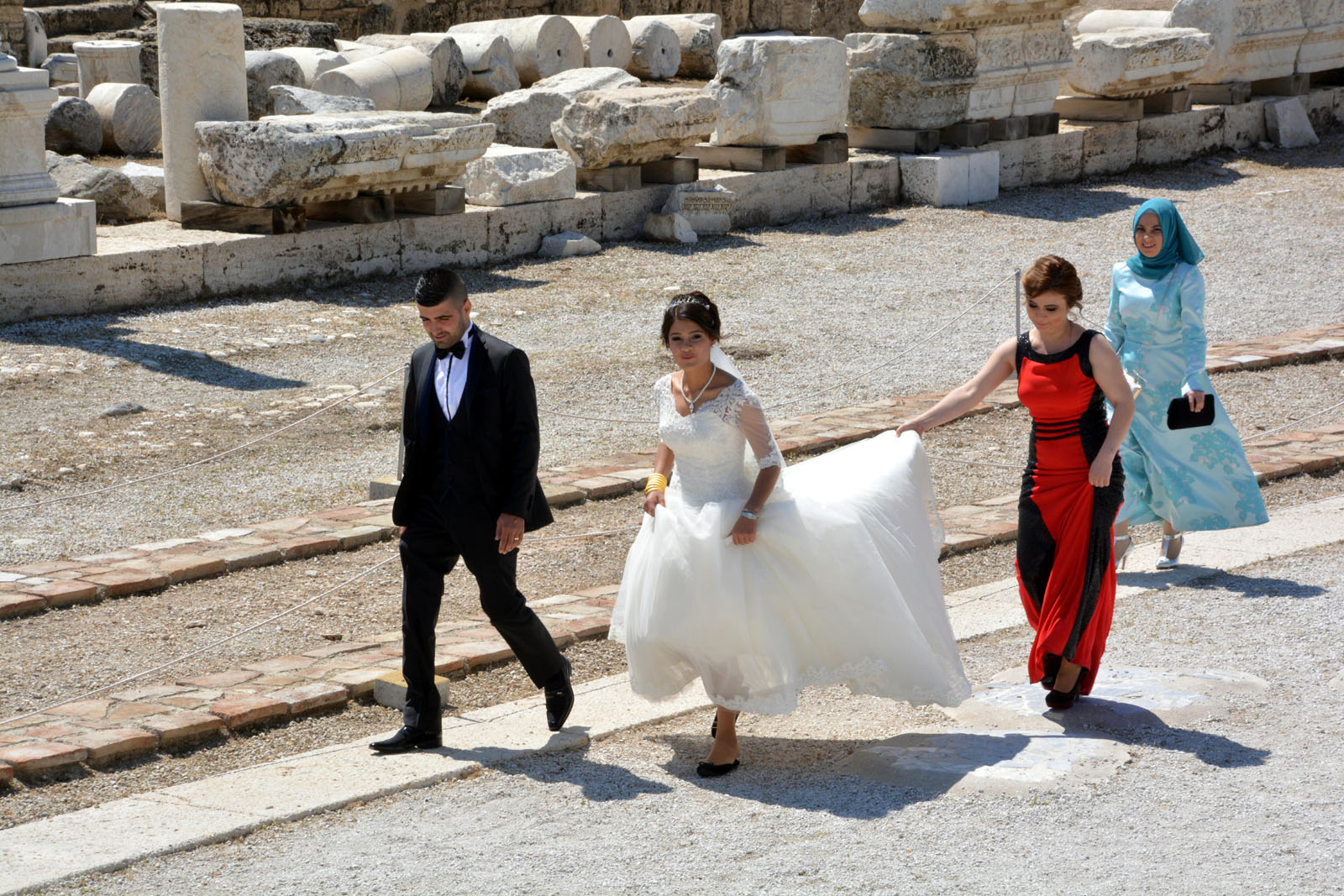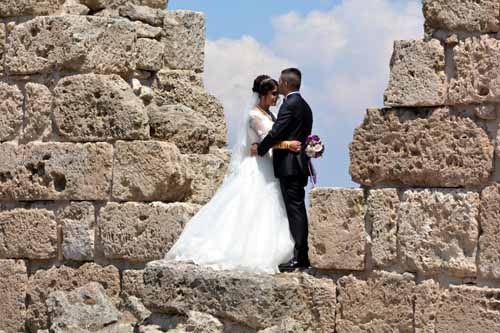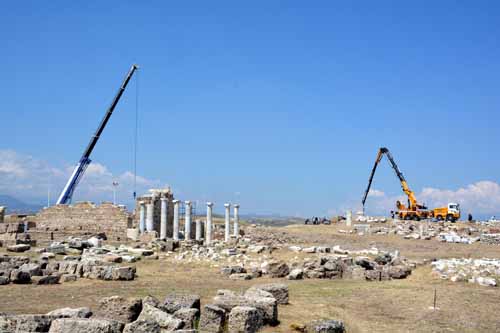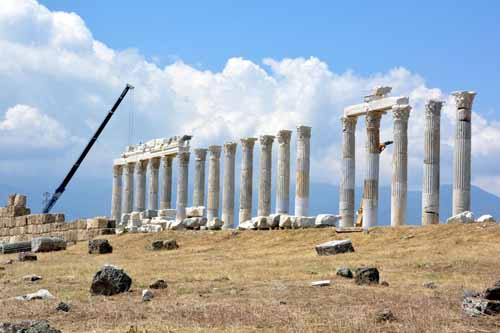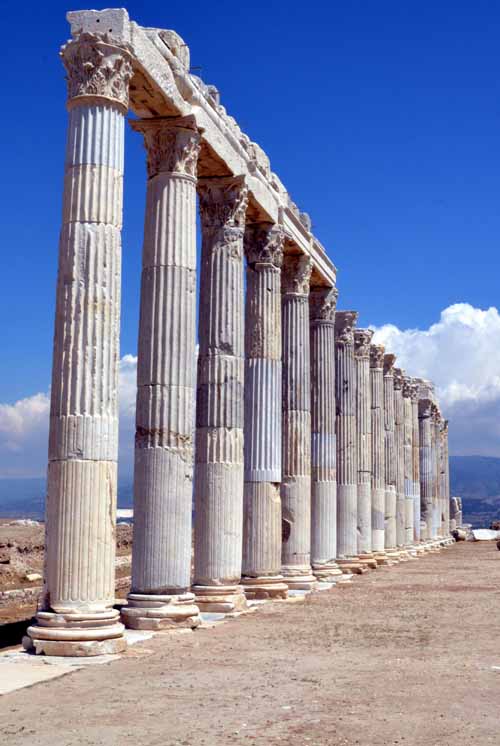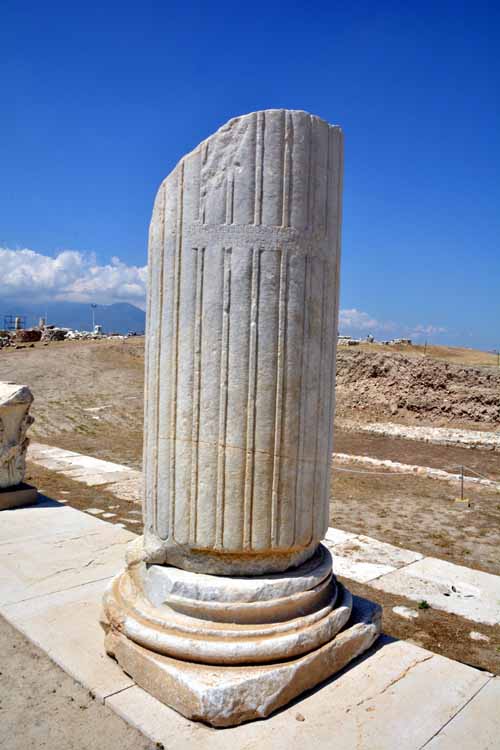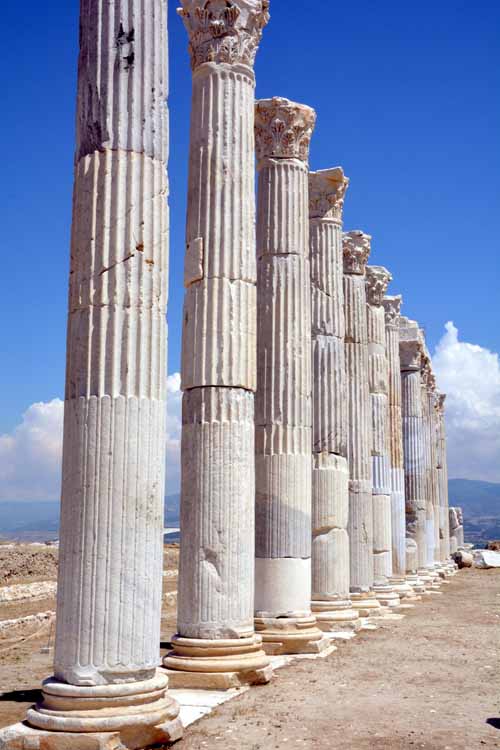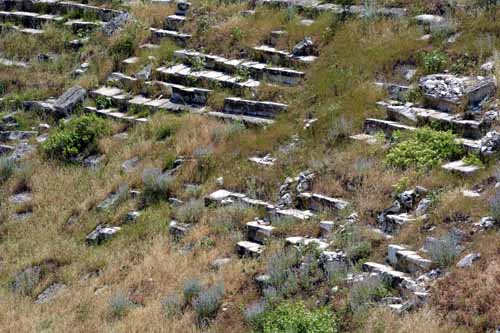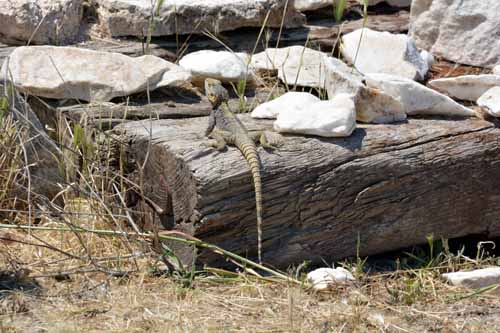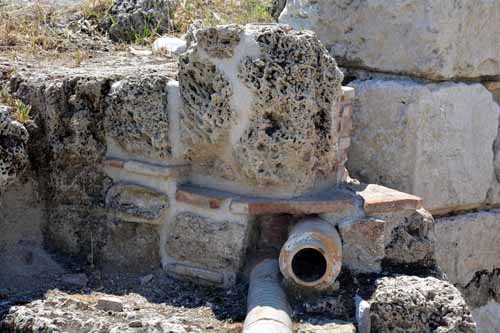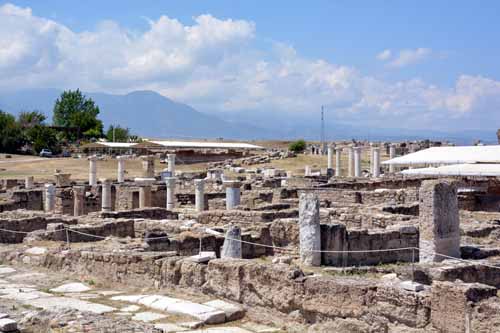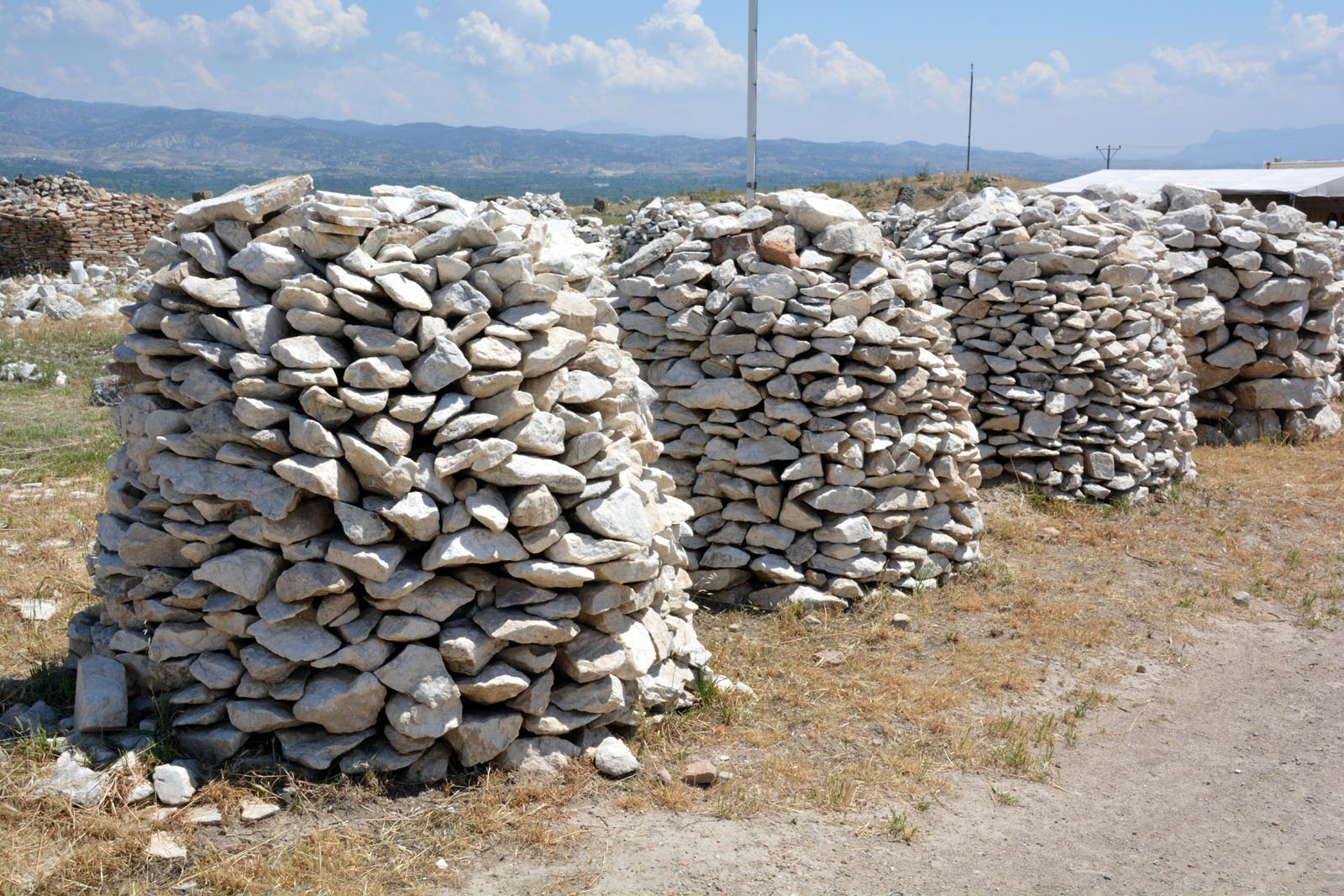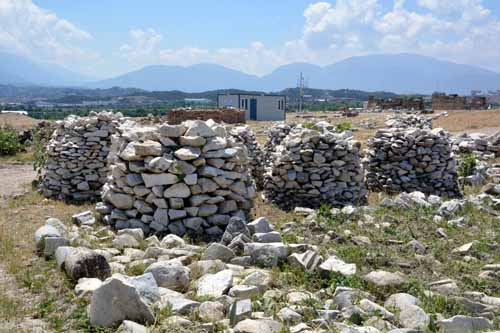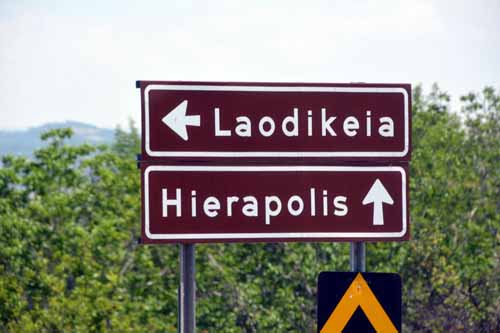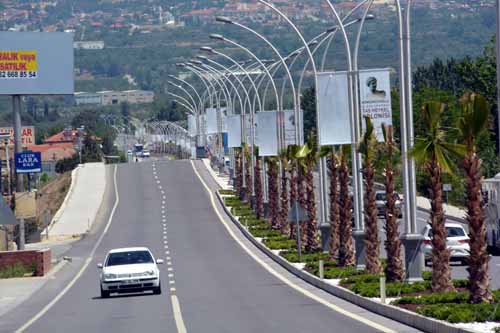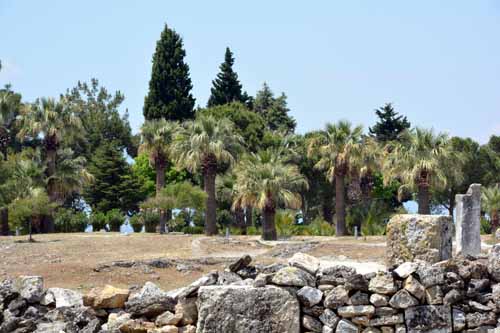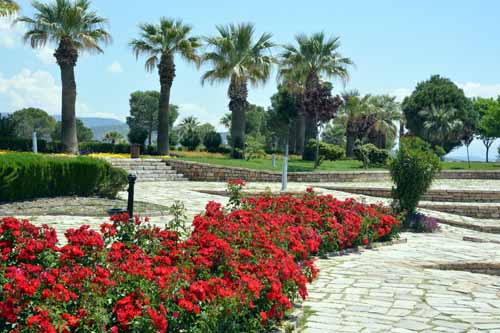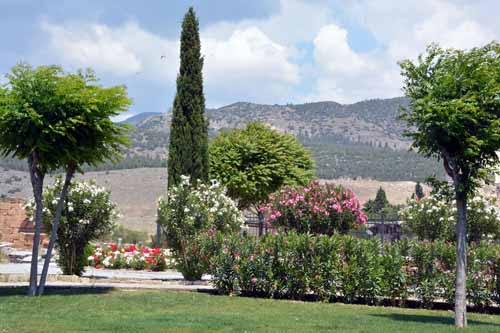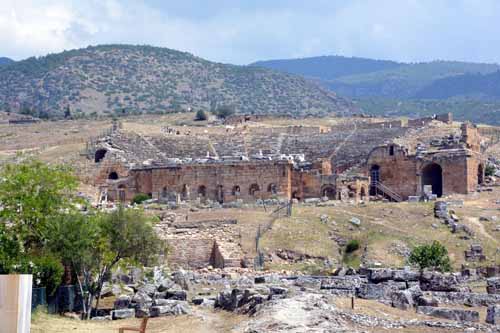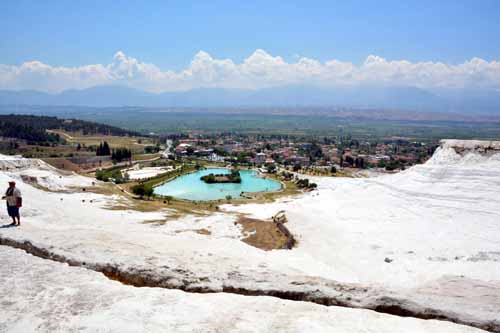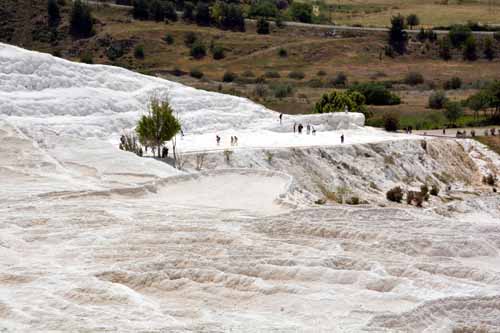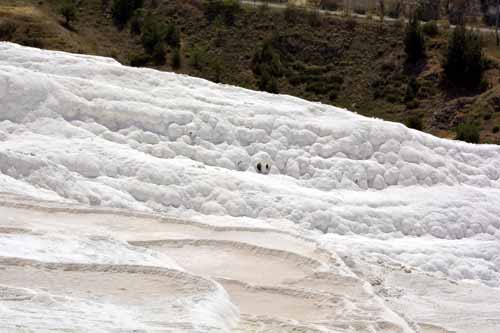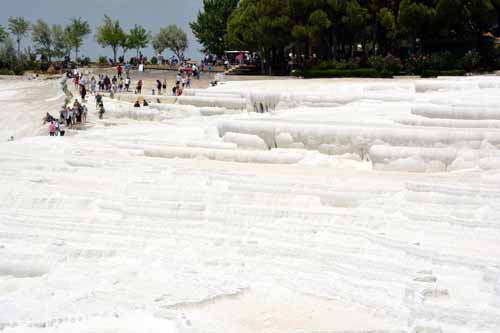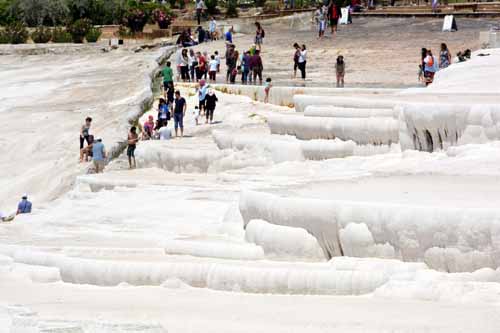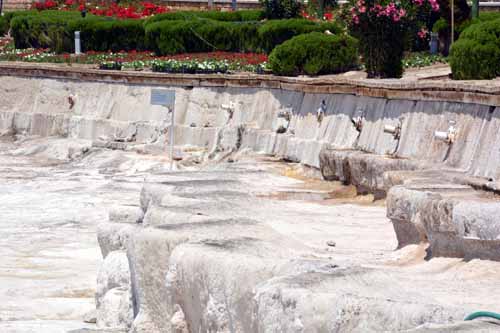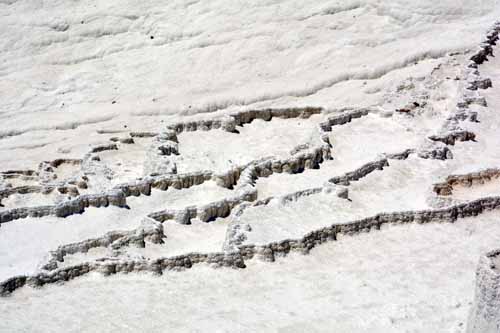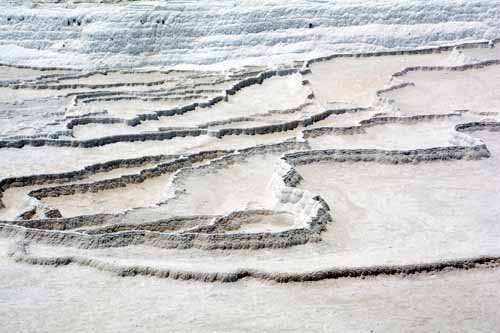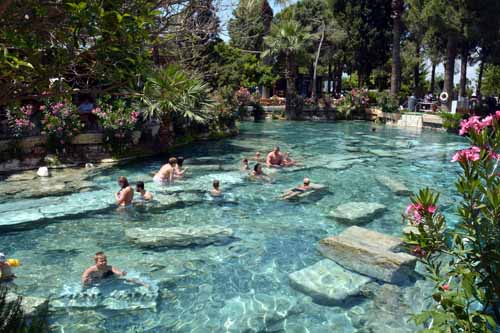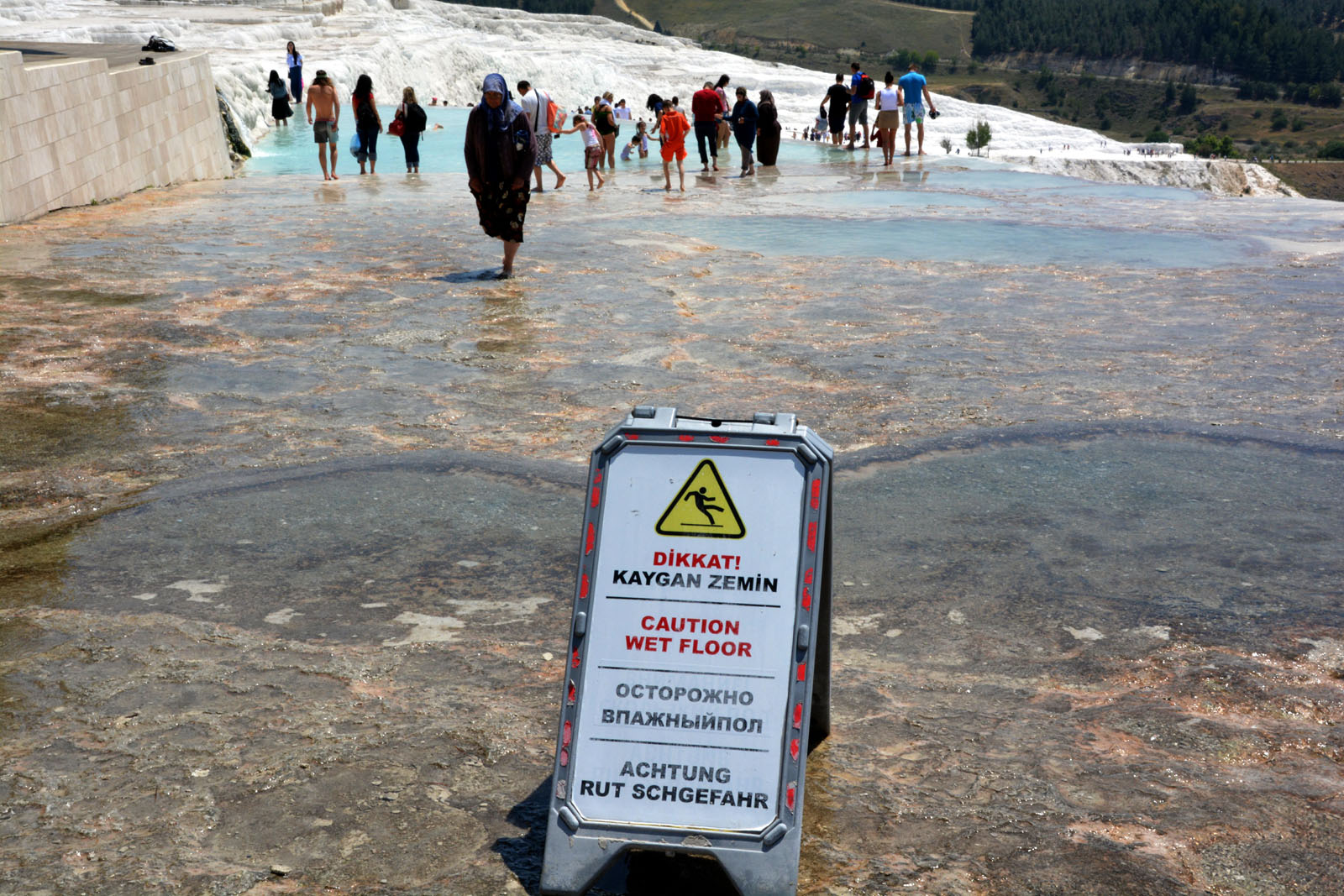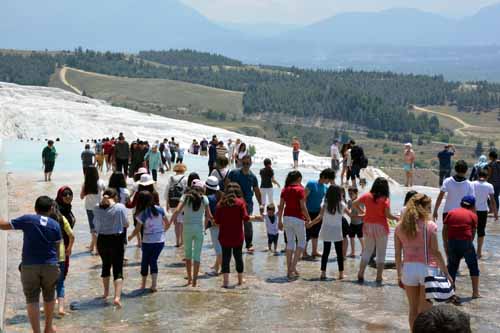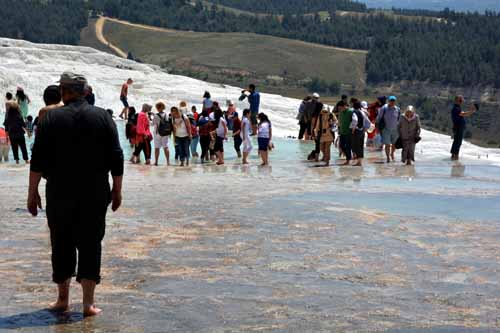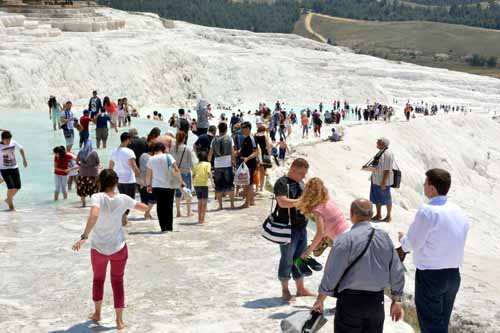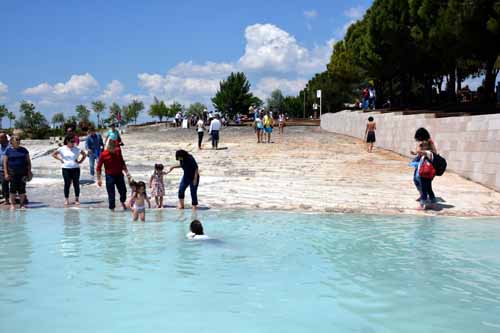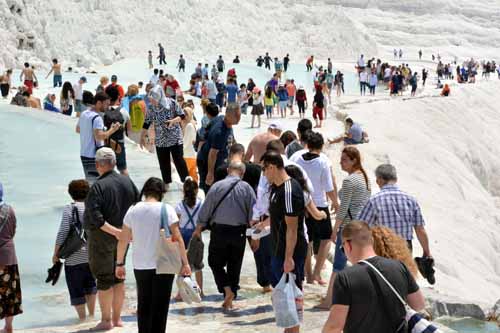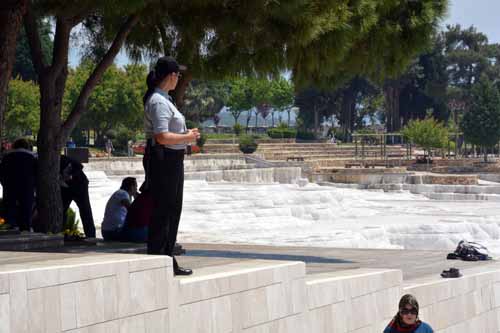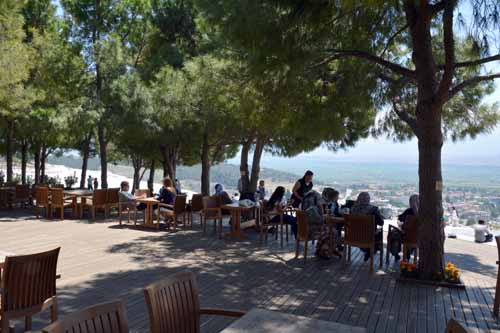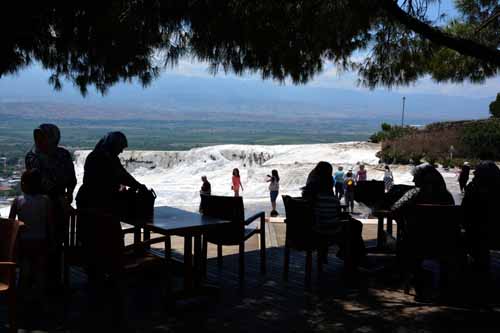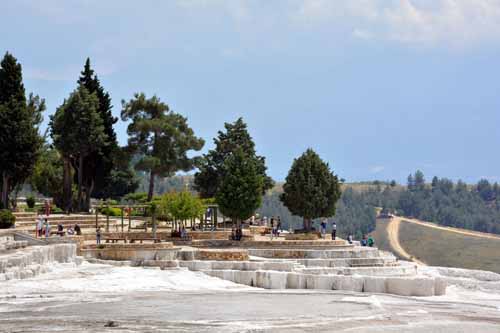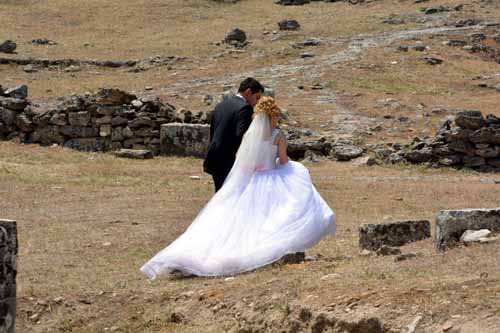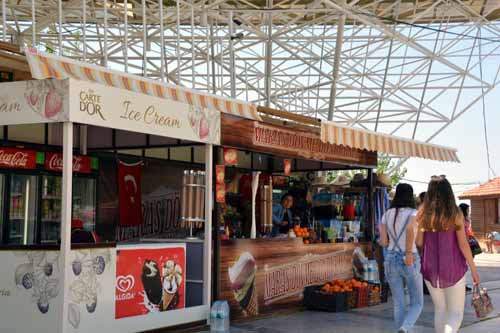Crete Pilgrimage 2016 - Day 16Turkey - PamukkaleIntroductionWe were picked up from the hotel and driven around the back streets of Kusadasi as a short cut to reach the road to the east. We followed the main highway east for some time, passing large fields of agroculture, fruit trees and lots of strawberries. We also passed several small geothermla power stations that looked remarkably the same as those in New Zealand (thanks to New Zealand engineers). Finally we arrived at the ancient Roman city of Laodicea, where excavation has only just begun. We walked around the site then headed north to the extensive white travertine terraces of Pamukkale, where hot water flows down aross the terraces. From there we were dropped at our hotel for an afternoon swim and an early night. The road to LaodiceaThe main highway runs due east from Kusadasi along the valley of a major river. The valley floor is flat and heavily cultivated due to the rich river silt and the abundance of water. Immediately above the floor of the valley the cultivation stops abruptly to give way to brown, barren hills.
The Ancient City of LaodiceaLaodicea was once a major Roman city, founded in 261BC. It grew with wealth from the surrounding region. It was destroyed by an earthquake in 60BC but was rebuilt. It was eventually destroyed by the Mongols after 1230AD. The travertine terrace at PamukkaleOver the centuries a hot spring has flowed and deposited a broad terrace ofwhite travertine, running down the hillside. It is a spectacular sight and a major tourist attraction. In Roman times the city of Hieropolis was built at the top of the terrace to take advantage of he hot water. Today there are swimming baths amongst the Roman ruins. A range of hotels were built on the top of the terrace but when Turkey wanted UNESCO World Heritage status for the site, the hotels had to go. Today they are close by at the foot of the terrace. Many tourists and visitors statr at the bottom and walk up a pathway cut into the travertine. We drove to the top and walked around to the active hot water spring. Here you can take oof your shoes and wade into the water. There are officious guards with whistles overlooking the scene to keep everybody in the correct place. After our paddle we bought ice creams and stood in the shade watching the locals. Then back to the car and to our hotel, where they had their own thermal water pool.
Last updated: 26/03/2017 |
